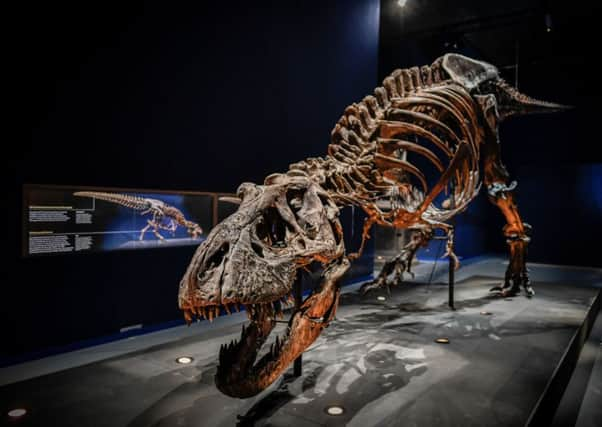Book review: Dinosaurs Rediscovered, by Michael J Benton


By the serendipity of book reviewing and interviewing authors, I recently read Stephen L Brusatte’s book, The Rise And Fall Of The Dinosaurs, Lisa Randall’s Dark Matter And The Dinosaurs, the wonderful Paleoart by Zoë Lescaze and Walton Ford, and now I have Michael Benton’s book on the same subject. In short, what unites the books is an attempt to show how things have changed in terms of how we think about dinosaurs. Benton’s pitch is elevator-brief. Studying dinosaurs has moved from being speculation to a science.
It is said that you can’t judge a book by its cover. This disproves that. It shows a ginger-furred, chicken-legged, lizard-faced creature with a tail like a lemur. It is very different indeed to the green scaly creatures locked in mortal combat that illustrated my beloved Ladybird Dinosaurs, by Colin Douglas and BH Robinson. Benton has the grace and integrity to admit towards the end of his book that the reconstructions might well be proved wrong in the future; but what he does have to say is fascinating. In a manner this is a bold reiteration of the scientific method itself. Disproving can be more informative than advancing a theory.
Advertisement
Hide AdThe move towards “science” involves a remarkable number of seemingly different disciplines. In part this book seems a rebuke to a notorious quip by Luis Alvarez, who said: “I don’t like to say bad things about paleontogists [sic], but they’re really not very good scientists. They’re more like stamp collectors.” This book charts the shift from the work being about a trowel in a desert to a computer in a laboratory. It is the movement from something being uncovered to something being understood. Of course, there was a period when studying such remains was more the preserve of the amateur enthusiast, keen to display something more exotic than a rhinoceros, but to say things have moved on is somewhat of an understatement.
There is a sense in which this book asks the simple questions and then shows the difficulty of coming up with answers. Why did some dinosaurs become behemoths and others shrink down? Given the immensity of the timescales involved, how did one evolve into another, and, more pertinently, did the evolution in some ways stall? What did they eat? How did they move? How did they have sex? Why did they have horns, or plates, or a kind of morning-star for a tail? Did they nurture their young, or leave them to nature red in tooth in claw? Was a Tyrannosaur upright like a very vicious kangaroo or more horizontal like a very vicious road-runner? And what did it use its tiny arms for?
Making sense of these seemingly obvious questions means palaeontologists had to develop expertise in engineering, biodiversity, the nature of ecosystems, climate change, histology, anatomy (how hard could a dinosaur bite?), geology, cladistics, plate tectonics and a host of other scientific approaches. It also, and Benton is very good on this, benefited from the revolution in computation, allowing hunches to be turned into statistical probabilities which no human could have calculated. It also deals with the problem of simple access to the fossils: studying bone structures means a bit of chopping and hacking, and the owners of the fossils in question might not be too happy about that.
I find it really rather bemusing. If I were to walk into the National Museum of Scotland to show my nephews a dinosaur skeleton, I wouldn’t know if it was genuinely made of bones from the Cretaceous or polymer replicas.
Why has there been such a spike in interest in the dinosaurs? I would suggest that part of it is in catastrophe thinking. These were a dominant species, and they are now extinct. Benton moves the argument on by looking as much at how they lived as at how they died, although there is a fascinating appendix listing a hundred different hypotheses for what caused the mass extinction (I never knew about the caterpillars being advanced as the culprits). As we look at how our own environment is changing, understanding the risks and opportunities shown in the fossil records seems more and more significant.
The book has – and I took great joy in this – neat pictures of dinosaurs with a “little known fact” about each one. It took me straight back to Bamburgh, poring over the heights, weights, ages and homes of things long gone. And yes: the asteroid theory is probably right, and if you want to see a dinosaur, look at a seagull.
Dinosaurs Rediscovered, by Michael J Benton, Thames & Hudson, £24.95